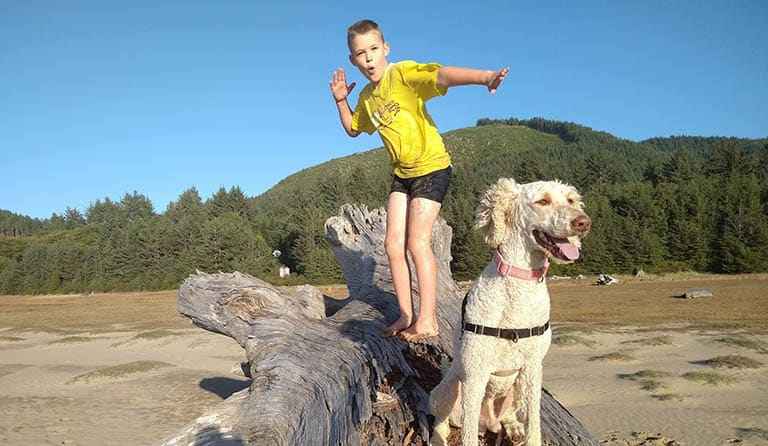‘Tis the season to celebrate the joy and companionship our furry friends bring to us. Buying for a fellow cat or dog owner this Christmas? Check out these present ideas from personalized artworks to fashionable accessories, the options are plentiful – and this blog supplies ideas to help you gift to the cat and dog lovers in your life.
Pet Portraits and Custom Arts
Transform the cherished personalities and unique features of a gift recipient’s cat or dog into timeless works of art that speak to the pet’s individuality. Connect with talented artists through platforms like Etsy, where you can submit a photo that becomes the inspiration for a beautiful handcrafted painting or a stunning canvas enlargement. These artistic presentations serve as a personal and heartfelt way to capture special moments with beloved pets for your friend, family member, co-worker or neighbor.
For giftees who would prefer to carry a piece of their pet with them wherever they go, consider offering smaller versions of the artwork that can seamlessly fit into their busy lives. Personalized mugs, tumblers and phone cases featuring the adorable likeness and name of a much-loved cat or dog adds a touch of joy to everyday life.

Pet-Inspired Jewelry and Keychains
Elevate the joy of pet ownership by gifting meaningful jewelry and keychains that intricately weave sentiment and connection into the gift recipient’s accessories. Jewelry can be versatile and has the ability to become an integral part of one’s daily ensemble. Keychains don’t just hold keys; they decorate bags and serve as constant companions on life’s journeys.
Thoughtful details such as the gift beneficiary’s pet’s paw print, engraved name, picture or birthday/gotcha day birthstone can transform the beautiful metal into a tangible reminder of the unique bond they share with their cat or dog. The ring, necklace, bracelet or keychain becomes a keepsake that is a source of everyday comfort and remembrance.
Pet Lover Home Decor Gifts
Bring a dash of joy into a pet parent’s home by selecting charming and amusing home decor that celebrates their love for their pet. Items featuring the likeness, name and humorous expressions relatable to every pet owner can be a playful addition to any space.
Pillows and throw blankets adored with images of a specific pet or breed bring extra coziness to a room. A leash holder engraved with a pet’s name can help with the organization of leashes, collars and other pet accessories. Spruce up the kitchen with dish towels that bring a touch of pet love into the room. These small yet charming details can transform daily chores, organization and relaxation into moments that reflect the deep affection shared between a pet and its owner.

Pet-Themed Clothing for Pet Owners
Fashion is not just about style; it’s a form of self-expression that communicates who we are to the world. For devoted pet parents, wearing clothing that proudly displays their love for their furry friends is a genuine reflection of their adoration. From cozy sweatshirts, socks and hats to shirts and even pajamas, there’s a wonderful selection of options to make a statement.
There is a charm in donning a garment with a pet’s image or name seamlessly stitched into the fabric. It’s not just clothing; it’s a personalized and fashionable declaration of love that the giftee has for their cat or dog.
Dog DNA Test
A dog DNA test is a unique and practical gift for any dog lover curious about their pet’s breed or health. Kits reveal breed ancestry, genetic health conditions and even potential canine relatives. These insights offer valuable knowledge about a dog’s background and health, helping owners provide the best care or at least satisfy their curiosity.
Christmas-Themed Presents for Pet Owners
A Christmas enthusiast among your gift recipients may find joy in a holiday-themed present. Consider a personalized stocking engraved with the pet’s name to help include the household cat or dog in the festive celebrations. This special stocking not only provides a secure spot for hiding treats and toys purchased by the pet owner but also adds a delightful touch to the holiday decor.
Extend the pet love to the Christmas tree with ornaments featuring the adorable image and name of the pet. These ornaments can become cherished keepsakes, transcending their role as mere decorations. Incorporate a personalized message and design to increase the sentimental value for years to come.
For a touch of humor and endearment, gift matching Christmas sweaters for both the owner and their pet. If the pet is not a fan of clothing, a Christmas-themed scrunchie and bandana set is a great alternative.

Accessories for Pets
Bandanas are simple yet stylish gifts for pets. Opt for festive designs or personalized options with their name to give them a unique and fashionable touch. For a holiday flair, consider adding feathers, tinsel or bows to elevate their look. These accessories are perfect for holiday parties or creating memorable holiday photos.

Fun DIY Pet Treat Gift Ideas
For the pet owner with a passion for baking and cooking for their furry companion, consider purchasing a gift tailored to this culinary hobby. Cookie cutters in pet-themed shapes like cats, dogs and bones can add a touch of charm in the creation of delicious treats. A treat maker makes the process easier with simple steps and quick cleanup. Look for one like this one.
Curate a gift basket filled with ingredients you know the gift recipient uses regularly in creating homemade treats and meals for their beloved pet. Include new cooking or baking recipes that the giftee may enjoy. The personalized gesture is sure to be received warmly and greatly appreciated. For recipe ideas to add, check out this blog.

Essentials for Pet Owners who Travel and Love Outdoor Adventures
Add enjoyment and practicality to the adventures of your hiking, road-tripping and exploring gift beneficiary by gifting essential pet travel gear. A travel bag complete with compartments for food, toys, bowls, treats and other necessities simplifies organization and creates easier access during excursions.
Elevate both style and comfort with a chic carrier that not only ensures a fashionable appearance for the traveler but also provides a cozy space for the pet. Supply essentials for trips long and short with a travel pooch and poop bag combo carrier. Enhance safety and aid in locating lost pets by gifting a personalized collar featuring the pet owner’s important information.

The Joy of Giving
When it comes to gift-giving for pet lovers, the key is to tap into their unique connection with their furry companions. From personalized accessories to cute pet-themed home decor or travel and adventure essentials, the possibilities are as diverse as the pets themselves. Add to the joy of giving this holiday season by surprising the pet parent in your life with a thoughtful gift that celebrates the special bond they share with their furry friend.
For even more pet lover gift ideas read this article.





















































